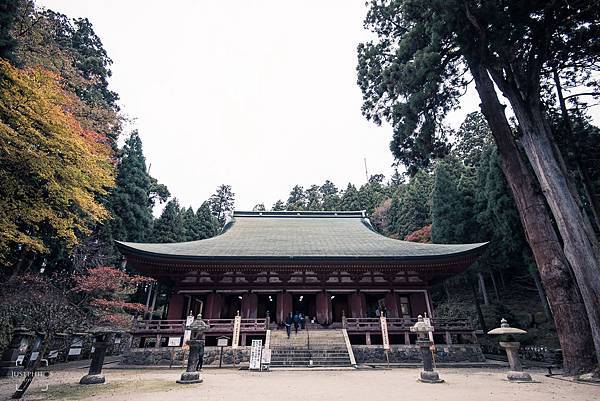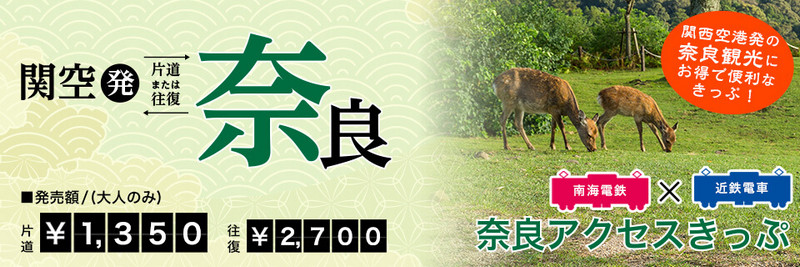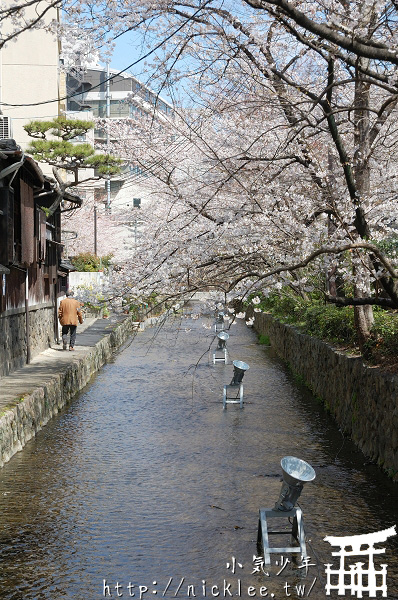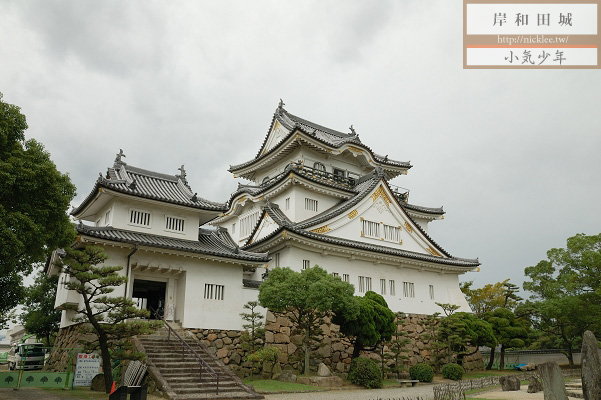Summary
Kyoto has always been the top choice for independent travel in Japan! This is my second time bringing my family to Japan for a filial piety trip, and we chose Kyoto again, where we planned a five-day, four-night trip. After a long wait, we finally embarked on our journey with the plane tickets we bought almost a year ago. As usual, this article will start with some travel records using photos, and I will write a separate article with more detailed itineraries when I have time. Since I was traveling with my parents this time, I planned a more relaxed itinerary. The advantage of planning the itinerary in advance is that you can carefully choose good accommodation and plan the trip at your own pace.
Overview of the Five-Day, Four-Night Itinerary in Kyoto
Day 1
Taoyuan International Airport, Taiwan → Kansai International Airport, Osaka → Kyoto Station → Nijo Castle → Kyoto Station, Meidai Tonkatsu
Day 2
Mt. Hiei Enryaku-ji Temple (Yokawa/Nishita/Higashita) → Nishiki Market → Shijo Kawaramachi
Day 3
Uji Byodoin Temple → Uji Ujigami Shrine → Nara Todaiji Temple → Nara Park → Kasuga Grand Shrine
Day 4
Kaohsiung Sanwei (Kamigamo Shrine → Nishimiya Shrine → Takayama Shrine) → Kinkaku-ji Temple → Kawaramachi Ichiran Ramen
Day 5
Kiyomizu-dera Temple → Sannenzaka → Ninen-zaka → Yasaka Shrine → Gion → Kansai International Airport, Osaka → Taoyuan International Airport, Taiwan
This time, I used the same camera as last time, the Nikon D750, with two lenses, the Nikon 24-120mm F4G and Nikon 16-35mm F4G. Unfortunately, the D750 seems to have the shutter issue that was announced by the official before, so there are white shadows in some of the photos, which is a pity for this travel record.
#1 This time, I chose EVA Air BR132 B777-300ER, which left a good impression after my last trip to Seoul.

#2 The weather in Taiwan and Japan was good on the day of departure, and I could see the mountains of Kyushu.

#3 Seeing the intricate railway system, I knew I had arrived in Japan.

#4 Since we didn’t go to Osaka this time, we chose the Haruka direct train to Kyoto, which takes only about 90 minutes.

For how to take the Haruka from Kansai Airport to Kyoto, you can refer to the 2014Kansai-Kyoto-Osaka Five-Day Trip article I wrote before.
#5 The weather was very good on the day we arrived in Kyoto, and the sunlight was shining through the semi-transparent roof design of Kyoto Station.

#6 Compared to the bad weather last time in Kyoto, this time I could clearly see Kyoto Tower.

#7 This time, because we booked the accommodation in advance, we chose Bochi Bochi Karasuma, which is about a 10-minute walk from the station. It was very comfortable.

#8 The streets outside the guesthouse are filled with the charm of Kyoto.

#9 Originally, I wanted to arrive in Kyoto early and spontaneously arranged a trip to Nijo Castle, but because we arrived after the admission time, I could only take photos of the sunset outside the castle.

#10 Although Christmas was still a while away, the decorations at Isetan Department Store in Kyoto Station had already created a festive atmosphere.

#11 Meidai Tonkatsu, located on the 11th floor of Isetan Department Store, serves delicious and juicy authentic Japanese pork cutlets that are unforgettable.

#12 Conveniently, I purchased a Mt. Hiei One-Day Pass, which made it easy to visit Mt. Hiei in one day and saved a lot on transportation costs.

#13 To go to Mt. Hiei, you can take the Eizan Electric Railway, which also goes to Kurama if you want to go there, from Demachiyanagi Station.

#14 After about a 20-minute ride, you will arrive at Hieizan Sakamoto, a simple Japanese wooden station.

#15 The Eizan Cable Car to the top of Mt. Hiei is truly magical as it climbs a slope of nearly 45 degrees.

#16 After a long ride, we finally reached Yokawa, the first stop on Mt. Hiei, which had some autumn leaves.

#17 Because the weather wasn’t great in the morning, the photos turned out a bit dull and dark.

#18 Yokawa Chudo is one of the World Cultural Heritage sites on Mt. Hiei.

#19 Mt. Hiei is also a popular spot for autumn leaves, and it must be spectacular when the whole area is covered in red leaves.

#20 The front view of Yokawa Chudo on Mt. Hiei is a serene place.

#21 Shaka-do in the Nishi-to of Mt. Hiei is hard to imagine being built in such a magnificent way in the deep mountains.

#22 Take a break at Higashi-to and have lunch. Suddenly, the sky cleared up.

#23 The main hall of Higashi-to at Mt. Hiei has important portraits of past abbots, etc.

#24 You can also see some leaves turning red early at Higashi-to.

#25 The soul of Higashi-to, the main building, is the Chudo, but unfortunately, it was under renovation, so I couldn’t take a complete frontal photo.

#26 Looking up, you can see the red and yellow maple leaves.

#27 Taking advantage of the good weather on the return journey, I captured the view of Kyoto City from Takayama.

#28 The Eizan Cable Car is similar to the cable car in Wulai, Taipei, with two cars running in opposite directions.

#29 On the way back to Shijo, you pass through Kamogawa, a very clean stream in Kyoto City.

#30 Shijo Kawaramachi is the busiest place in Kyoto City after Kyoto Station.

#31 I took a detour to Nishiki Market just before it closed for the day.

#32 Because we stayed near Kyoto Station, we chose to take the JR Nara Line to Uji and Nara, which was relatively convenient.

#33 The weather was very good when we arrived at Uji Station, but unfortunately, due to camera issues, the photos were not perfect.

#34 Uji Bridge, one of the landmarks in Uji.

#35 Because we arrived in Uji in the morning, many shops on the approach to the temple were not open yet.

#36 Byodoin Temple in Uji is also one of Kyoto’s World Cultural Heritage sites.

#37 Many people who come here are used to comparing the 10 yen coin with the temple’s image.

#38 Taking a different angle, I captured the reflection of Phoenix Hall at Byodoin Temple in the water.

#39 There are also some larger Japanese-style buildings inside Byodoin Temple (didn’t record the names of the buildings XD)

#40 After leaving Byodoin Temple, you can cross the small bridge over the river to the other side and go straight to Uji Shrine.

#41 Since Uji Shrine is very close to Uji, many tourists also visit Uji Shrine.

#42 Uji Shrine is also one of the World Cultural Heritage sites in Uji.

#43 The national treasure main hall of Uji Shrine.

#44 Trying authentic Uji matcha, a must-try in Uji.

#45 Back on the approach to Uji, many shops sell various snacks and items made with matcha.

#46 I unexpectedly had a delicious bowl of udon at Nakamura Seimen, a soba noodle shop in Uji.

#47 Many people would visit Nakamura Fujiki when they come to Uji, but because there was a 20-minute wait, we didn’t go in due to our schedule.

#48 A cute mailbox that makes use of local characteristics in front of Uji Station.

#49 Continuing from Uji, we took the JR train to Nara.

#50 When you think of Nara, you will definitely think of the deer that can be seen everywhere.

#51 The road in front of Todaiji Temple in Nara is filled with tourists and deer.

#52 One of the gates of Todaiji Temple, which is also a magnificent wooden structure.

#53 I don’t know why the deer were fighting, but they put on a “deer fight” live show.

#54 Todaiji Temple in Nara is said to be the largest wooden building in the world.

#55 Compared to the deer in front of Todaiji Temple, the deer in Nara Park are relatively calm.

#56 Kasuga Grand Shrine, another World Cultural Heritage site in Nara, has a sacred atmosphere.

#57 The sunset in Kyoto comes early in autumn, and before 5 o’clock, I had to increase the ISO to get clear images.

#58 The deer in Nara have a common characteristic that they hardly pay attention to you if you don’t have deer crackers in your hand.

#59 A close-up of the maple leaves gradually turning red in Sanwei, Kaohsiung, also has its own charm.

#60 Kitano Tenmangu Shrine, which I’ve been wanting to visit since my last trip to Kyoto, didn’t have the expected red leaves this time.

#61 The other side of the entrance to Kitano Tenmangu Shrine had more red leaves.

#62 Kitano Tenmangu Shrine in the early morning was less crowded, making it feel quiet and secluded.

#63 If I only show this photo, you might think that the autumn leaves at Kitano Tenmangu Shrine were quite good this time XD

#64 The main hall of Kitano Tenmangu Shrine, which enshrines Yakushi Nyorai.

#65 Walking to the other side of the main gate, the red leaves were in much better condition.

#66 After visiting Sanwei, I truly feel that Kitano Tenmangu Shrine is the most beautiful place among the three.

#67 Nishimiya Shrine in Sanwei is often overlooked by tourists, but it is also a good place to enjoy autumn leaves.

#68 Nishimiya Shrine had the best autumn leaves among the three that day.

#69 The stone Suikinkutsu at Ishu-in Temple in Sanwei requires an additional fee to enter.

#70 Takayama Shrine in Sanwei is the only World Heritage site among the three in Sanwei, with many buildings preserved since the Edo period.

#71 Because my family hadn’t been to Kyoto before, I had to include Kinkaku-ji Temple in the itinerary again.

#72 To be honest, Kinkaku-ji Temple was crowded with tourists, and because of the rain, I actually wanted to leave this place quickly.

#73 The autumn leaves at Kinkaku-ji Temple were redder earlier this time compared to last time (?).

#74 We stayed at Karasuma Kyoto Guesthouse for four nights, and it was a great accommodation experience.

#75 It was sunny in the morning, but suddenly it started drizzling at Kiyomizu-dera Temple.

#76 The autumn leaves at Kiyomizu-dera Temple were the same as in previous years, still too early in early November.

#77 Gion Shrine is another place with many tourists, probably because people come here to pray for good relationships XD

#78 Due to the rain, the photos of the Kiyomizu Stage turned out to be quite dark.

#79 The five-story pagoda, which was under repair during my last visit, has now been restored. Additionally, due to the unpredictable weather, I unexpectedly captured a rainbow in the distance.

#80 Another visit to Kodai-ji Temple.

#81 The weather was like sudden heavy rain followed by sunshine in the early morning. This is the Ningning Path that you will pass through on your way to Yasaka Shrine.

#82 This time, I didn’t spend much time at Yasaka Shrine due to the rain and some areas being under renovation, as well as time constraints.

#83 Looking from the gate of Yasaka Shrine towards the Gion district in front.

#84 For the first time, I tried printing my own photos as postcards in Japan and sent them back to my friends in Taiwan.

#85 At a soba noodle shop on Gion Street, I actually ordered a rice dish instead of soba noodles, but the taste was just average.

#86 Flower-viewing Lane, even on a rainy day, was still crowded with tourists.

#87 I took a China Airlines A321-200 on the return journey, which was only one year old. Because it took off around five o’clock in the afternoon, the sky was still quite bright when I arrived at the airport.

#88 Finally, taking advantage of the fact that the sky hadn’t completely darkened yet, I used my phone to capture the Osaka skyline and the distant sunset colors just as the plane took off, marking the perfect end to my trip.






